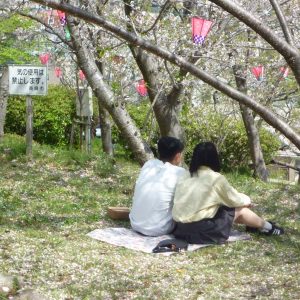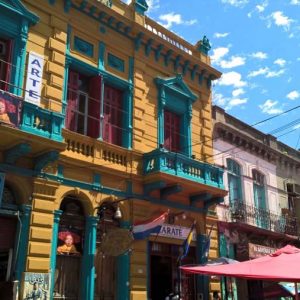There are an infinite number beautiful places around the world but few countries can claim more beauty per square acre than Great Britain. The Cotswolds is hard to beat for its pristine, bucolic landscape and is home to some of the most unspoilt, historic towns and villages in England. The ubiquitous honey-coloured Cotswold stone buildings provide a quintessential English charm found no-where else in the world. Unspoiled villages, market towns and grand manor houses are sprinkled sparsely across this rural landscape of rolling hills (wolds) and small river valleys.
 Officially, it’s Britain’s largest Area of Outstanding Natural Beauty but is a rather vaguely defined landscape covering nearly 800 square miles, spilling across five counties (Wiltshire, Gloucestershire, Oxfordshire, Warwickshire and Worcestershire) in western England. Travelling south-west from Shakespeare’s Stratford-upon-Avon in the north to Roman Bath in the south travellers pass through the heart of the Cotswolds.
Officially, it’s Britain’s largest Area of Outstanding Natural Beauty but is a rather vaguely defined landscape covering nearly 800 square miles, spilling across five counties (Wiltshire, Gloucestershire, Oxfordshire, Warwickshire and Worcestershire) in western England. Travelling south-west from Shakespeare’s Stratford-upon-Avon in the north to Roman Bath in the south travellers pass through the heart of the Cotswolds.
In the Middle Ages the wool trade made many land owners very rich and this was the source of the wealth that built market towns and innumerable grand manor houses. ‘Cots’ means a stone enclosure for keeping sheep. The majority of working people, of course, were very poor in this rural backwater, which is evocatively described in Laurie Lee’s ‘Cider with Rosy’. This lyrical portrait of his Cotswold boyhood, captures the essence life in a traditional rural village just after the First World War, a time that rapidly disappeared with the coming of roads and cars.
 Nowadays, innumerable celebrities from Prince Charles (Highgrove Estate) and Princess Ann (Gatcombe Park) to Jilly Cooper and Jeremy Clarkson have second homes in the Cotswolds and it has become the most expensive rural landscape in the country. Part of the attraction is that it is just a 90 minute drive from London.
Nowadays, innumerable celebrities from Prince Charles (Highgrove Estate) and Princess Ann (Gatcombe Park) to Jilly Cooper and Jeremy Clarkson have second homes in the Cotswolds and it has become the most expensive rural landscape in the country. Part of the attraction is that it is just a 90 minute drive from London.
Its historic market towns, sleepy limestone villages, beautiful river valleys, water meadows and beech woodlands draw vast crowds in the summer and popular places can become choked with tour buses. Chipping Campden, Broadway, Lower Slaughter and Bourton-on-the-Water probably draw the biggest crowds – because they are so stunning, but to really enjoy their ambience the best time to visit is off-season in Spring and Autumn or one of our increasingly mild winter periods.
 There are plenty of B&Bs and pubs with rooms to stay in but to taste the essence and feel the history of the Cotswolds book a cottage or stay in one of the dozens of grand country houses that have morphed into upmarket hotels. I booked a cottage for a week in the picture perfect village of Snowshill, near Broadway, off the tourist trail and with a fabulous village pub, the Snowshill Arms. You might not have heard of Snowshill but you’ve probably seen it as the snowy opening scene in Bridget Jones’s Diary.
There are plenty of B&Bs and pubs with rooms to stay in but to taste the essence and feel the history of the Cotswolds book a cottage or stay in one of the dozens of grand country houses that have morphed into upmarket hotels. I booked a cottage for a week in the picture perfect village of Snowshill, near Broadway, off the tourist trail and with a fabulous village pub, the Snowshill Arms. You might not have heard of Snowshill but you’ve probably seen it as the snowy opening scene in Bridget Jones’s Diary.
A short walk from our village is the Cotswold Lavender farm, fields of fragrant lavender but it’s necessary to visit in June/July to see it in all its glory. Harvesting and distilling the 250,000 plants had sadly finished when we visited.
 If your wallet runs to it, Buckland Manor hotel, also near Broadway is a treat worth paying for. One night costs almost the same as a week in my cottage in October, but with only 15 rooms staying here is like visiting with some seriously rich friends. Non-residents are welcome for morning coffee, lunch or dinner, a great way to feel a bit of an celebrity on a budget.
If your wallet runs to it, Buckland Manor hotel, also near Broadway is a treat worth paying for. One night costs almost the same as a week in my cottage in October, but with only 15 rooms staying here is like visiting with some seriously rich friends. Non-residents are welcome for morning coffee, lunch or dinner, a great way to feel a bit of an celebrity on a budget.
This is glorious hiking country or a place for short strolls. The Cotswold Way is arguably England’s most picturesque national walking trail, meandering 103 miles from Bath to Chipping Campden. Hardcore hikers might walk it in a week but it’s a hilly landscape so most people would take two weeks to leisurely enjoy the experience. But fortunately for the less hardy or those of a certain age there are plenty of shorter circular walks that take in part of the trail. A brisk four mile round trip walk is from Broadway to Broadway Tower, one of England’s outstanding viewpoints.
 The Tower was conceived by Capability Brown as a Saxon folly but grew in significance after various Pre-Raphaelite painters and Arts & Crafts designer William Morris began using it as an inspirational country retreat. From the top of the tower (1,024 above sea level) its possible to see across to Wales and much of the Cotswold Hills. Just beyond the deer park is a cafe, a good place for refreshment, before continuing along the Cotswold Way back into Broadway.
The Tower was conceived by Capability Brown as a Saxon folly but grew in significance after various Pre-Raphaelite painters and Arts & Crafts designer William Morris began using it as an inspirational country retreat. From the top of the tower (1,024 above sea level) its possible to see across to Wales and much of the Cotswold Hills. Just beyond the deer park is a cafe, a good place for refreshment, before continuing along the Cotswold Way back into Broadway.
There are so many wonderful pubs throughout the area, including the Porch House in Stow-on-the-Wold, which claims to be England’s oldest inn, founded in 987AD. The Cotswolds is also home to a number of local Breweries, the most famous being the Donnington Brewery and Hook Norton who still make weekly deliveries of ale by horse and dray.
There are few pubs that have remained simple boozers, most have become gastropubs serving restaurant style meals. Local produce is in the forefront including Gloucester Old Spot pork and sausages, Cotswold lamb, double Gloucester cheese and fabulous steak and kidney pies. For seekers of a classic English tea room it’s hard to beat Tisanes Tea Room in Broadway. Home made cakes and snacks in a beautiful 17th century shop or their attractive garden.
 There’s plenty of ancient history around. Sudley castle has a 1,000 year history and was home to Katherine Parr the last and surviving wife of King Henry VIII, she is buried in the castle grounds. It also became a Royalist refuge during the English Civil War and a rarity for a medieval castle is that the current owners are still in residence.
There’s plenty of ancient history around. Sudley castle has a 1,000 year history and was home to Katherine Parr the last and surviving wife of King Henry VIII, she is buried in the castle grounds. It also became a Royalist refuge during the English Civil War and a rarity for a medieval castle is that the current owners are still in residence.
Bath obviously has the best Roman remains but the little known amphitheatre at Cirencester is one of the largest known examples surviving from the Roman occupation. Estimated to have had a capacity of about 8,000 people, it was built early in the 2nd Century AD although today the huge turf mounds covering the site require some imagination on the part of visitors.
Older still is the Rollright Stone circle, near the village of Long Compton with a 5,000 years old history. Although nowhere near as impressive as Stonehenge or those on the Scottish islands its greatest charm is the lack of commercialism, no tickets, shop or cafe, and I was the only visitor.
Pretty villages abound in the Cotswolds, and while each has its own flavour, most of them share a similar aesthetic of the gorgeous Cotswold stone they are shaped from. Lower Slaughter is said to have England’s prettiest street.  Bourton-on-the-Water is charming but more commercialised, during the August Bank Holiday, the river Windrush that flows through its heart is lined with shops, pubs and cafes. It is also the venue of a unique river football match between local teams that has been a regular fixture since the 1920s.
Bourton-on-the-Water is charming but more commercialised, during the August Bank Holiday, the river Windrush that flows through its heart is lined with shops, pubs and cafes. It is also the venue of a unique river football match between local teams that has been a regular fixture since the 1920s.
Chipping Campden has to be the most attractive market town in England. The buildings along the High street have spurned all modern developments and, cars aside, it is little changed in 300 years.
To avoid the tourist crowds, who rarely leave the High street, check out the Eight Bells pub in Church Street, a seventeenth century inn with terraced garden along with a gastro menu and local ale.
Some people might find the Cotswolds a bit kitsch, a bit too clean and pretty. It’s certainly not wild or rugged but getting off the main tourist trail, staying in a cottage, walking in the hills, finding an isolated country pub, still makes for a truly special experience.











